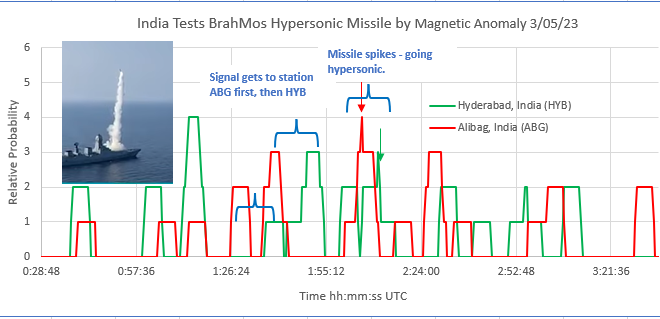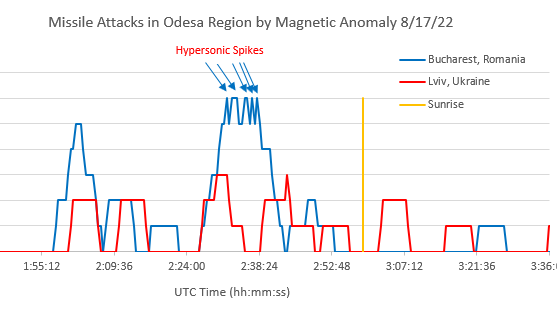SOURCE: API

The Indian Navy carried out a successful precision strike in the Arabian Sea by ship-launched BrahMos missile with a DRDO-designed indigenous seeker and booster which for the first time replaced Russian systems in the missile but Hyderabad Magnetic Observatory and Alibaug Magnetic Observatory that uses magnetometers to record changes in the magnetic field including those on or near the Earth and in space observed some spikes which Richard Cordaro on Twitter claimed saw Hypersonic spikes.
Cordaro explained that ” Missiles often produce acoustic waves which penetrate our ionosphere, creating magneto-acoustic waves. Resulting in magnetic field fluctuations recorded on ground-based magnetometers”.

In Ukraine when Russia fired its Kh-22, a long-range anti-ship missile that was developed in the late 60s and similar hypersonic spikes were detected on the magnetometers since the missile is perfectly capable of going above 4.5 Mach.
BrahMos is a supersonic cruise missile that can hit Mach 3 and efforts are being made to increase its supersonic speeds to near hypersonic cruise regime that starts from Mach 5 onwards but BrahMos-ER or X at best will top out at near 4 to 4.5 Mach in near future or it already has been done. Experts agree that missile that often go near Hypersonic speeds can trigger Hypersonic spikes in the acoustic waves that it produces but that’s not often the case.
BrahMos-2K which will be based on the Russian 3M22 Zircon will see the development of true Hypersonic class cruise missiles. Cordaro later agreed that he should have been little more careful with his wording as he too agreed that Brahmos went supersonic and not Hypersonic